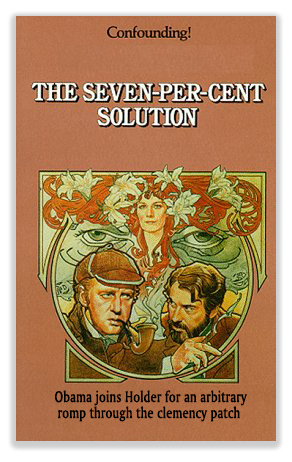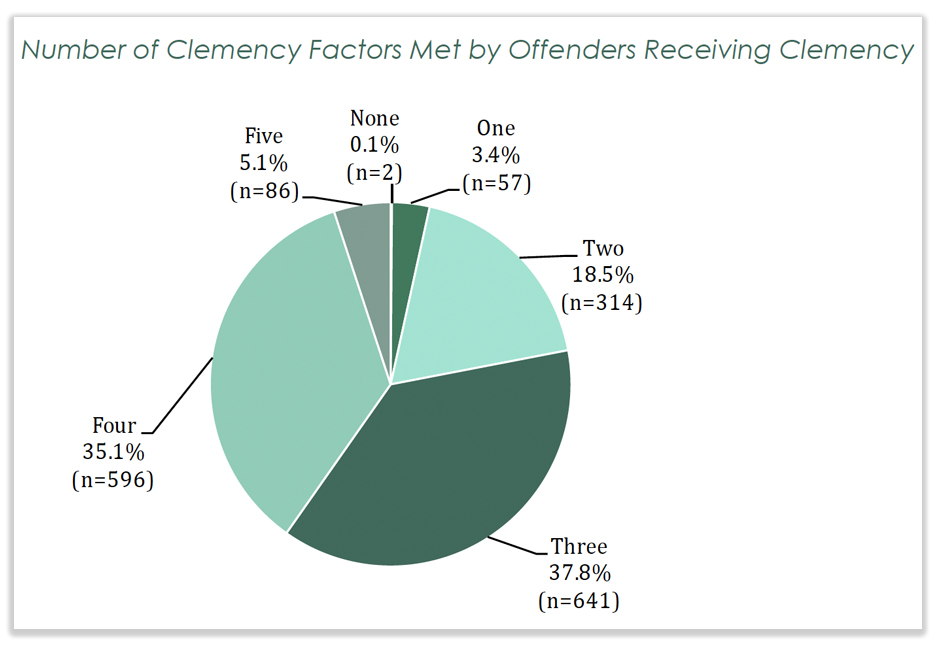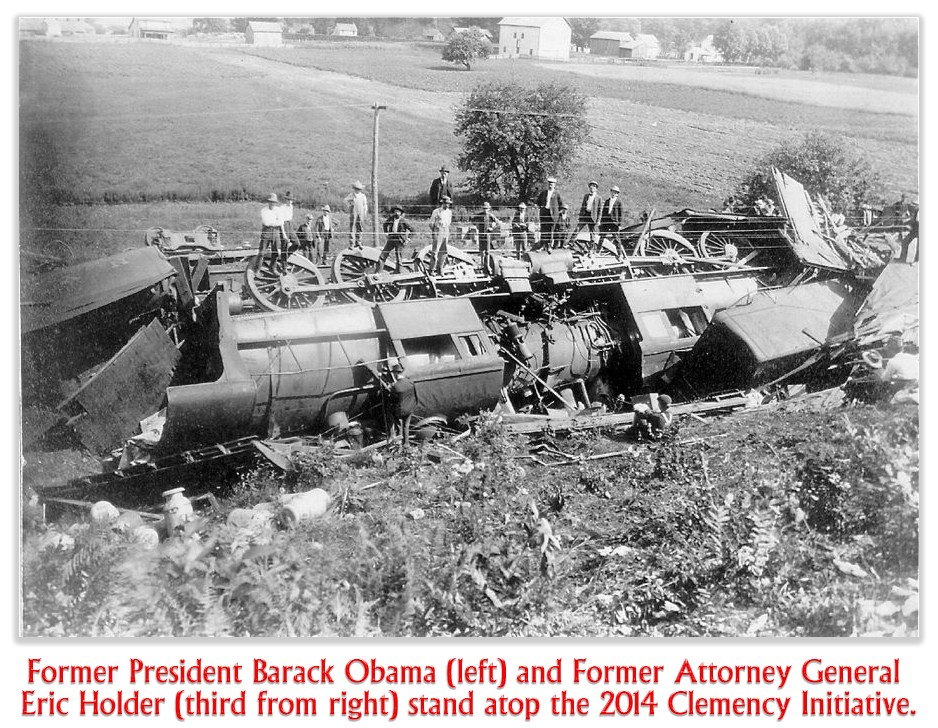We post news and comment on federal criminal justice issues, focused primarily on trial and post-conviction matters, legislative initiatives, and sentencing issues.
THE SEVEN PERCENT SOLUTION
 When President Obama (remember him?) announced an initiative in 2014 to grant clemency to people serving unduly harsh sentences in the federal prison system, there was a land rush to apply. Ultimately, about 12% of the federal prison submitted applications seeking executive grace.
When President Obama (remember him?) announced an initiative in 2014 to grant clemency to people serving unduly harsh sentences in the federal prison system, there was a land rush to apply. Ultimately, about 12% of the federal prison submitted applications seeking executive grace.
By the time the dust settled on the morning of The Donald’s inauguration, President O had granted 1,696 of the applications filed. This number, about 7% of all applicants, was dwarfed by the 7,881 applications left stranded when the Obamas fled the coming Trumpocalypse in a Marine helicopter.

Many of the inmates whose applications were denied complained that racism played a role, favoritism played a role, or simply that the clemency staff was throwing darts at a wall, and granting applications they happened to hit. Last Tuesday, the U.S. Sentencing Commission issued a report on the late great 2014 Clemency Initiative, and what it found suggests that the race-conspiracy people are wrong, but the dart-at-the-wall folks are spot-on.
Initially, the report – entitled “An Analysis of the Implementation of the 2014 Clemency Initiative” – does not especially settle the dark theories, espoused chiefly by white inmates, that President Obama was only interested in pardoning minority inmates. The Bureau of Justice Statistics reports that 53% of all drug inmates are black, and 57% are Hispanic. However, 71% of all clemency recipients were black, 19% were white, and 9% were Hispanic.
The fact that crack cocaine defendants have been 81% black, and that crack sentencing ranges have traditionally been stratospheric, thanks to the previous 100:1 ratio of crack to powder – may account for this. However, it would seem that the people with the most right to complain about being excluded from clemency would be Hispanics.
 At the same time, the Report does substantiate the widely-held belief that the Clemency Initiative shut down any chances for commutation of sentences other than drug offenses. The real news, however, is that despite its criteria and processing standards and lofty rhetoric and self-congratulatory righteousness, the Clemency Initiative was as arbitrary as a Star Chamber proceeding.
At the same time, the Report does substantiate the widely-held belief that the Clemency Initiative shut down any chances for commutation of sentences other than drug offenses. The real news, however, is that despite its criteria and processing standards and lofty rhetoric and self-congratulatory righteousness, the Clemency Initiative was as arbitrary as a Star Chamber proceeding.
At the outset, the Department of Justice announced six criteria for clemency. Initially, those were considered to be “processing” criteria, but later morphed into “eligibility” criteria. It turns out they could have been gumdrops or pixie dust, for all of the relevance they had to the process. The standards were that to qualify, a clemency applicant
• would have had to have gotten a lower sentence under txxxx h existing law;
• must be a low-level, nonviolent offender;
• must have served at least 10 years;
• must not have a significant criminal history;
• must have had good conduct in prison; and
• must have no history of violence
Deputy Attorney General James Cole made it clear at the outset that “the initiative is open to candidates who meet six criteria” and that “a good number of inmates will not meet the six criteria.”
The Sentencing Commission Report contains good news and bad news. The good news (already known to a lot of people) is that DOJ was just kidding. It turns out that people didn’t have to ring all six bells after all: only 54 of the 1,696 people receiving a commutation met all of the six criteria. Only 5% of the winners met five of the criteria, 35% met four, 38% met three, 19% met two and 3% met only one. Two guys got clemency after going 0-6: they were career criminals, violent, had bad conduct, were high-level drug people and hadn’t yet done 10 years. Sweet for them.
 It turns out that 62% commutation recipients had criminal history scores of 3 points or higher, 23% were assigned to the highest Criminal History Category, and 16% were career offenders. Thirty percent had serious misconduct while in prison, and 13% had violent misconduct in prison.
It turns out that 62% commutation recipients had criminal history scores of 3 points or higher, 23% were assigned to the highest Criminal History Category, and 16% were career offenders. Thirty percent had serious misconduct while in prison, and 13% had violent misconduct in prison.
Now the bad news, which was also suspected (if not known) by many people. Examining all the announced Clemency Initiative factors together, the Sentencing Commission report estimated that 2,687 inmates met all six of the Clemency Initiative criteria, yet only 92 of the got clemency. “Therefore,” the Report drily states, “there were 2,595 offenders incarcerated when the Clemency Initiative was announced who appear to have met all the factors for clemency under the Initiative at the end of President Obama’s term in office but who did not obtain relief.”
 “The Obama administration’s 2014 clemency initiative helped reduce sentences for thousands of federal defendants at many times an historic rate,” the Marshall Project gushed the other day, “but it still was not as efficient or as organized as it could have been, a new federal report concludes. So many more candidates met the requirements of clemency than were granted it.”
“The Obama administration’s 2014 clemency initiative helped reduce sentences for thousands of federal defendants at many times an historic rate,” the Marshall Project gushed the other day, “but it still was not as efficient or as organized as it could have been, a new federal report concludes. So many more candidates met the requirements of clemency than were granted it.”
Let’s call it what it is. Despite the proclaimed “six criteria,” nearly 2,600 inmates who were perfect fits were ignored or denied while half of the clemency winners met only one-half or fewer of the standards. Obama Clemency was not a process: it was a crap shoot (unless, of course, you happened to be a trans-sexual darling of the left convicted of espionage against America).
 “Not as efficient or organized?” The same could be said of a train wreck.
“Not as efficient or organized?” The same could be said of a train wreck.
U.S. Sentencing Commission, An Analysis of the Implementation of the 2014 Clemency Initiative (Sept. 5, 2017)
– Thomas L. Root

